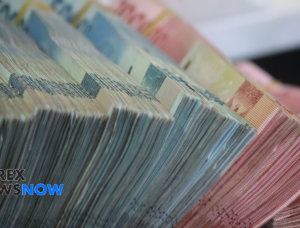
The emergence of blockchain more than a decade ago, has opened the door to a completely different financial industry, one with digital currencies at its core. As opposed to the traditional monetary system run by central banks, this is a decentralized alternative, offering better security and transparency, and reducing the need for banks as the “middle man”.
Although the industry has developed tremendously and now people can use crypto easily since the process is as simple as to download MT4, the underlying mechanics of the blockchain and software that make the industry work are impressive.
The issue of how new currencies are created continues to be popular among a broad audience and because of that, the current material will explore the top two methods that are currently used across the majority of operating blockchains.
Mining explained
Cryptocurrency mining continues to be the most popular method used to create new currencies on the blockchain – not just Bitcoin, but also a broad range of altcoins. Basically, the process involves miners using their computational power to verify financial transactions.
New blocks are constantly generated on the blockchain and with each of them, new coins are released into the system, as a reward to miners that have verified transactions. Because the system is decentralized and different participants are verifying the same transactions, vulnerabilities like double spending are negated.
On the negative side, mining is an increasingly criticized approach due to the large amount of energy required to keep a blockchain operating. In the case of Bitcoin, the energy used in a single day is more than what a small country needs for the same period of time.
Staking – a better alternative?
As an alternative to the energy-consuming mining process, staking is now emerging across the board, with large blockchains like Ethereum already starting a transition in that direction. In this case, staking involves holding funds in a cryptocurrency wallet and locking them up to receive a reward.
In this model, the main idea is that participants lock coins at a particular interval and the protocol randomly assigns the right to validate the next block to one of them, who then earns a reward.
PoW vs. PoS
A blockchain relying on mining uses a Proof-of-Work consensus mechanism, while one based on staking relies on Proof-of-Stake. On one side, PoW had been tested for many years and continues to be used in a large number of cryptocurrency projects. DDoS attacks on a blockchain using PoW are almost impossible with today’s technology. High energy costs, centralization of mining, and low transaction throughput are some of the main flaws.
When it comes to PoS, increased scalability, higher transaction throughput, and low energy consumption make it more attractive. On the downside, the reduced number of projects using it, the lower level of security, and the ability to become “the staker of choice” by buying a large number of tokens, should be mentioned.
The bottom line
Mining and staking are the dominant methods used to generate currencies on a blockchain. There’s still no consensus regarding which one is better, yet both have pros and cons. The good news is that these methods are flexible and as the future unfolds, the industry will continue to mature, potentially leading to new innovative ways to create digital assets.
- Altcoins
- among
- Assets
- Attacks
- audience
- Banks
- bbc
- Bitcoin
- blockchain
- board
- Buying
- Central Banks
- Coins
- Consensus
- consumption
- continue
- continues
- Costs
- crypto
- cryptocurrency
- Cryptocurrency Wallet
- currencies
- Current
- day
- DDoS
- decentralized
- digital
- Digital Assets
- digital currencies
- energy
- financial
- flaws
- Forbes
- funds
- future
- good
- High
- How
- HTTPS
- idea
- industry
- IT
- large
- leading
- Level
- Majority
- Miners
- Mining
- model
- Most Popular
- news
- offering
- operating
- People
- Popular
- PoS
- power
- projects
- Proof-of-Stake
- range
- Run
- Scalability
- security
- Simple
- small
- Software
- Spending
- Staking
- system
- Technology
- The Future
- time
- Tokens
- top
- transaction
- Transactions
- Transparency
- Vulnerabilities
- Wallet
- WHO
- Work
- years











